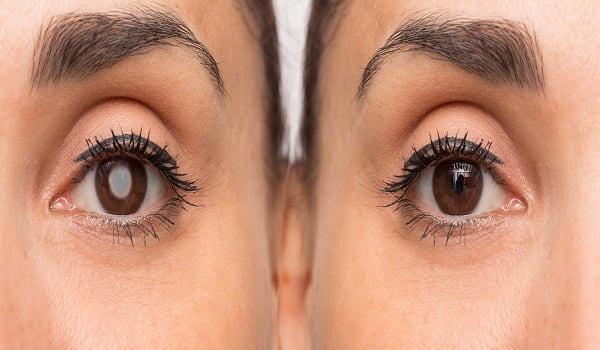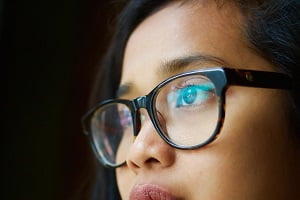
Cataract is an eye disease which does not usually cause severe eye complications other than its typical symptoms that appear as a result of this disease.
Cataract usually worsens with time and affects the lens of your eye only. It causes lens to become cloudy which interferes in proper focusing of the light on retina and image clarity. Things appear blurred and hazy to a person who has cataract.
Cataract first appears at a small portion of the lens and then gradually spreads to the entire lens as age increases and the disease progresses. At an early stage, the symptoms are not seen and the disease may get unnoticed till it affects the patient’s vision to an extent that it interferes in the daily routine of the patient.
Cataract generally occurs during old age such as starting from the age of 40 years and above. It usually occurs in one eye and with age and time spreads to the other eye. However, it is not contagious and does not spread from one person to another. Read about causes and risk factors for cataract.
What are the symptoms of Cataract?
You may have the following symptoms if you have cataract.
- Patient experiences blurry, cloudy, foggy or filmy vision
- Shortsightedness occurs in older people
- Color seems faded or yellowing of colors is experienced by the person
- Problem with light and glare
- Worse vision in dim lights
- Requires brighter light than usual to read and see things properly
- Trouble with prescribed glasses or contact lens – changing the power of glasses and the lens prescribed by eye specialist
- Problem in driving at night due to glare and lights from the vehicles
- Double vision in the affected eye
- Rarely ‘Halos’ are seen around lights
The symptoms listed above can also be the signs and symptoms of other eye problems. Therefore, a proper eye check up by an ophthalmologist is necessary to know whether symptoms are because of cataract or you have any other eye problem.
How is cataract diagnosed?
When to go for an eye checkup?
If any change in vision or some other eye problems like eye pain, watery eye, headache due to strains on eye, problem with glare and bright light etc. happens, you should go for an eye check up to know the exact cause of the problem and diagnose your eye disease.
Cataract is easily detected by an ophthalmologist during an eye checkup.
Prior to the eye checkup, your ophthalmologist will record this information about you:
- Genetic heredity of any eye disorder
- Medication-related information- is the patient using any medicines for a long time such as statin and corticosteroids?
- Any prior head or eye injury
- Past history of any eye surgery
Then, a comprehensive eye examination is done by the ophthalmologist to check overall health of your eye and know the cause of the vision defect and eye problems. The examination includes a series of tests which are as follows:
Test for the diagnosis of cataract
Visual acuity test
This test examines the clarity and sharpness of your vision. With this test, your doctor knows how clearly you can see the things and read the letters.
Usually, this test determines the vision power of a patient i.e. whether it is 20/20 (normal) or any vision impairment is present. In this test, a chart having alphabets or letters which are progressively getting smaller are placed in front of the patient. The patient has to read the letters from one eye at a time while the other eye remains closed.
The chart is placed both far and near to the patient so as to check his far and near vision appropriate for both the eyes.
Slit-lamp examination
This test allows the doctor to see the structure of the front part of your eye clearly under magnification. The microscope used is called slit-lamp because it uses an intense beam of light, a slit to illuminate structure of cornea, lens, iris, and spaces between the iris and cornea. The slit helps in viewing the structure of these small sections and in detecting any small abnormalities in your eye.
Retinal examination
In this test, your doctor will observe the retina. The pupil is dilated before the examination by putting an eye drop. Dilation of the pupil allows wider area for examination. The lens of the eye is examined for any cloudy formation which is a sign of cataract using a slit lamp or ophthalmoscope.
Tonometry
This test is done with the help of a device called Tonometer to measure intraocular pressure of the eye so as to check any other eye disorder and abnormalities. Numbing drop is applied to the eye for this test.
Other tests include tests for colour detection and sensitivity to light.
If you use glasses or contact lenses, you should carry them with you when you go for an eye examination. This will help doctor to precisely evaluate the problem and vision impairment.






